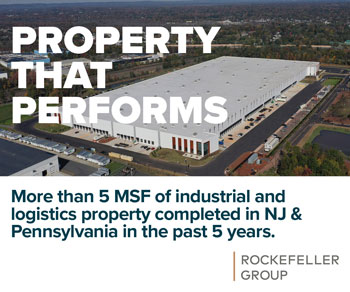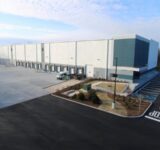By Joshua Burd
When it was her turn to speak, Angela Palmer opened with some basic context.

Palmer, a panelist at a recent NAIOP event, noted that she spent six years as a designer with Gensler before moving into a role more focused on technology. It was an important point as she prepared to discuss the growing wave of innovation in construction — from the role of virtual and augmented reality to the use of drones to measure large sites.
“With all of this technology, there was a need and there still is a great need for people who understand the technology and understand the architecture and design,” said Palmer, a design technology specialist based in Gensler’s Houston office. “There is a huge market for that right now and there are whole jobs being created for that need.”
Such is the promise and the challenge of both evolving and emerging technologies, which Palmer and others highlighted at NAIOP’s recent CRE.Converge Virtual event. The growing array of digital tools, software and other platforms are poised to transform commercial development, the panelists said, but come with hurdles tied to adoption and integration.

“What might have been a toy to us a few years ago is now a tool,” said Andrew McCoy, associate director of the Myers-Lawson School of Construction at Virginia Tech. “And people every day are now figuring out on construction sites or through design — and through the lifecycle of a building, through maintenance and management — how to turn these toys of yesterday into tools.”
The panelists, who were among dozens of speakers at the program in early October, touted the potential of 3D printing, wearable technology and other innovations, along with the expanded use of traditional building information modeling, or BIM. McCoy noted that “many of these technologies bleed into one another in many different ways,” but serve a common goal.
“They all aim to reduce costs and increase productivity in some way — and this is really a direct response to our current environment, where we have rising material and labor costs and significantly reduced availability of labor,” he said.
To that end, McCoy pointed to the growth of off-site and modular construction, an existing practice that has been enhanced by innovation and is gaining “a huge amount of market share” in response to labor shortages and rising costs. Modular construction does have limitations, he said, but “technology is allowing us to customize it pretty well these days.”
Another long-established tool, virtual reality, has also evolved in recent years to a concept known as augmented reality. Palmer explained the difference, noting that someone who puts on a VR headset is essentially taken to a new environment that is disconnected from his or her current location. With augmented reality, users can view their physical surroundings with the addition of computer-generated content and information.
She said the growth of equipment such as Microsoft’s HoloLens, along with improvements in computing power, have made virtual and augmented reality more prevalent in the design process today. What’s more, “we’re finally at a point with VR and AR where people are starting to get comfortable with it,” including clients.
“Augmented reality is really the future, I’d say, and virtual reality is where we’re at now,” Palmer said. “And it not only allows us to make quicker decisions in design but it allows us to explore new options that we previously may have not had the time to do.”
Still, she said the ability to tap that potential requires a greater level of integration with building information modeling systems, or BIM, and a need to create more sophisticated 3D models. Both tasks are often easier said than done with the current technology.
Palmer added that designers are “really moving away from the idea of creating realistic visuals in order to create more informative visuals and informative models.” That makes it all the more important to successfully integrate platforms at different stages of development, she said.
Doing so could also change the traditional building process — in which architects spend several months on a design before handing it off to a contractor to bring the project to fruition.
“The hope is that … in order to create really information-heavy models, we need that process to be much more intertwined,” Palmer said. “And we need to not be working in a silo as a designer for the first five or six months of a project, but really bring (in) the contractors and even in some cases the fabricators and manufacturers. We need them all on board throughout the process.”

Moderated by Matt Gelb of Wipfli LLP, the panel also highlighted advances in BIM software, including the expansion from 3D modeling to 4D and 5D versions that incorporate the additional layers of time and cost. Derek Davis, president of davisREED Construction, said his firm is now integrating BIM platforms with its project management and scheduling programs, providing a real-time and in-depth look at a project through the lens of its budget — all without having to visit the job site.
The technology has proved especially helpful during the pandemic, with the need for social distancing.
“Construction is still a very physical thing,” Davis said. “We need to be on our jobs sites, but sometimes the management teams are separate from the field team.”
He added that 5D BIM, with the integration of scheduling and project management, has also been useful for bank inspectors that have been unable to see job sites in person.
“This is an appropriate topic now, but it’s just one more way of conveying to people where you’re at,” Davis said, later adding: “These are pretty practical tools that we’re using in today’s construction environment.”
As the panelists discussed other innovations, Palmer suggested that they could only work if industry professionals were willing to embrace them and learn the necessary skills. Some may fear that their jobs will be replaced by technology, when in fact it can provide them an opportunity to learn a new skill.
“They all intertwine,” she said, “so we not only need specialists in these different areas, but we also need people who can generally understand how these systems all work together.”










